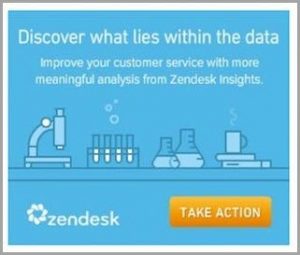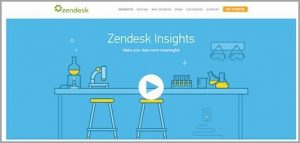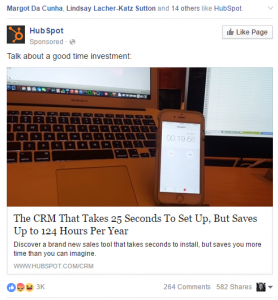This Article Is a Quick Fact-Check on Why Retargeting Is Just as Important and Valuable for Both B2B and B2C Marketer, as Initial Audience Targeting Methods
Exigencies are aplenty. The customers visit your product page but do not purchase online. Sometimes, they may opt for email signups but leave the page halfway without filling the complete form. Such instances are a case in point where you, as a marketer, may have missed an opportunity to acquire customers. An efficient and cost-effective window for you to reacquire them is ‘retargeting’. It’s a tactic that helps marketers to connect with prospects (or probable ones) who didn’t convert due to above-mentioned exigencies.
A quick fact-check on why retargeting is just as important and valuable for both B2B and B2C marketers, as initial audience targeting methods —
- Average conversions via landing pages across industries are 2.35% which reflects that 97.65% of your traffic needs retargeting (WordStream)
- Retargeted customers are 70% more likely to complete a purchase than cold traffic-based customers (Criteo)
Customers moving out of your site or email sign-up form don’t clearly indicate their buying interest. They are disinterested and therefore, you may need to convince them further, with a better marketing tactic.
Here’s how retargeting as a marketing tactic is handy —
- Younger demographics have a higher chance of conversion when they’re retargeted at the starting of a month
- Visitors who visited your site late at night or in the wee hours have a higher chance of conversion when retargeted the following afternoon
What sets retargeting apart is that it drastically reduces your customer acquisition costs. CMOs and their teams need to tread carefully here. The lure of lower costs can sometimes lead to poor retargeting campaigns and you may end up taking this for granted. Don’t.
Here’re some ways to squeeze the maximum juice from retargeting campaigns.
Landing Pages are Your Entrée
Retargeting ads directly to the brand site is one of the common mistakes made by marketers. When someone clicks a retargeted ad, it reveals that they’re interested in the specific offer or info, and not necessarily your business. Sending them to your homepage could hamper the chances of customer acquisition.
In the parlance of a chauffeur and a drive, the former gets people exactly to their destination not the latter. Landing pages are your chauffeur while retargeting. They don’t need to be all jazzed up. Keep it simple and relevant. Communicate your offer details with a clean CTA and that shall lead to a conversion. Try to have an optimized landing page in place with A/B testing and avoid complicated forms or navigation links.
HubSpot and Nature Air did a great job with A/B testing of their landing pages. While HubSpot witnessed better conversion rates for their downloadable content, Nature Air, saw a staggering 591% increase in their conversion rates.
Sync Retargeting Ads and Landing Pages
It’s fab to have all bases of landing pages covered. But, that’s futile if you’re unable to deliver user experience. For that, a perfect harmony or sync between your retargeting ads and landing pages are essential. People expect a consistency in their experiences when they view your retargeting ad, click it, and go to your landing page. Sync elements here are design, color, fonts, and tonality of communication.
Zendesk has this sync spot on. Here’s one of their retargeting ads:

And, here’s the subsequent landing page:

Notice a subtle and conscious effort by Zendesk to match the ad and the landing page in terms of tonality as well as aesthetics.
Personalization Begins with Segmentation
In your marketing arsenal, retargeting is a military laser gun, not some mortar. Retargeting gets the best results (conversions) when it’s precision-based. Your ability to speak to your target customer directly determines the effectiveness of your campaign.
Here’s an example. A retargeting campaign for someone who read a case study on your website needs to promote a product that contextually aligns with the case study. On the other hand, a retargeting campaign for someone who added products to cart (higher purchase intent) but didn’t buy needs to have a more direct message (offers or discounts) about the products.
Retargeting is not limited to acquiring new customers. You can retarget existing customers with upselling or cross-selling campaigns. In such cases, the approach needs to be different from the above. Reach them with warm, friendly greetings, showcasing the value-add of the next purchase. Salesforce does this beautifully. The company retargets its Sales Cloud customers to promote its Service Cloud and Marketing Cloud.
The manner in which people engage with your site is a great foundation for you to draw meaningful inferences. From those inferences, you can develop target segments to deliver tailor-made retargeting campaigns which ooze personalization.
Don’t Spam Existing Customers with Retargeting
Facebook ads manager is a good tool to have up your sleeve, to develop a custom audience. Then, with Facebook Pixel, you can identify URL views of your product or services page.
Here is the catch. Your existing customers can be retargeted for upselling or cross-selling campaigns as mentioned previously. However, exclude them from the regular retargeting list. You don’t want them to see a promo for something they’ve already purchased. And, when that happens frequently, it is annoying and drives them away.
The whole retention game plan goes for a toss when your existing customers are aimlessly retargeted. With that, all your personalization efforts are hampered.
Look to Propose Value not Pitch
Blatancy in retargeting is toxic. Don’t try and extract value from customers. Instead, deliver value to them. Retargeting campaigns are best when they’re seamless in nature. Elevator pitches are best left to elevators.
The content of your retargeting campaign should be about what your target audience is interested in. For example, in a retargeting campaign for a CDP, content that is blindly focused on ‘buy from us’ doesn’t cut through the noise. Instead, a small testimonial from someone who uses your CDP fetches better results. Look to resolve the challenges your target customers are facing. That’s the only way to distinguish a value proposition from a sales pitch.
Here’s how HubSpot nails the same:

Be Unique and Versatile
Many marketers will agree that when multiple retargeting campaigns run, the start is great but a striking decline follows. It’s called ad fatigue. Similar when the same ad keeps reappearing, the human mind stops processing them. It’s called banner blindness. Thus the longer you run a retargeting campaign with the same content, the probability of ad fatigue and banner blindness goes higher.
- CTRs dip by 50% after the same set of ads run for five months (ReTargeter)
This is where uniqueness and creativity through ad rotation come to the rescue. You can touch almost any positive emotion of your retargeting audience but the second it gets weary, its curtains for your campaign. Explore with imagery, headlines, and the like. Maintain a set of ads with an appropriate number of options. That set is the cure for ad fatigue and banner blindness.
Retargeting Works Wonders If You’re Tactful
Like any other strategy in marketing, retargeting is only as good as its execution.
- 46% of marketers believe that retargeting is the most underused marketing technology
- 49% of brands and 68% of agencies are shifting their budgets from display ads to retargeting
- Retargeting leads to a whopping 1046% increase in brand reach and 726% increase in site visits (comScore)
Retargeting, like any other form of marketing, is about thinking from the customer’s perspective and delivering what they desire.



